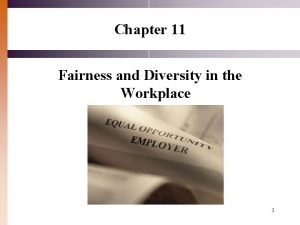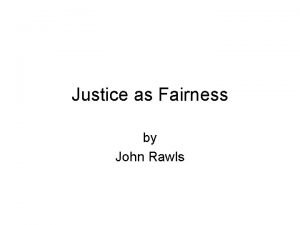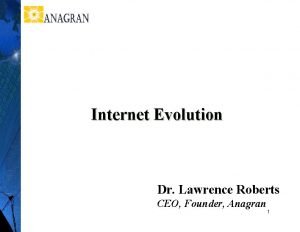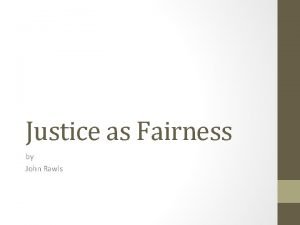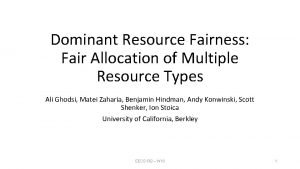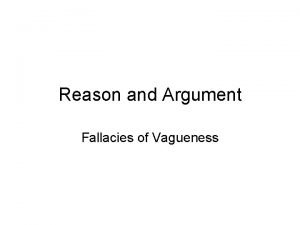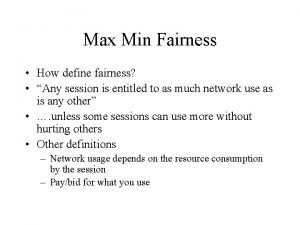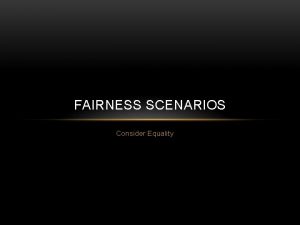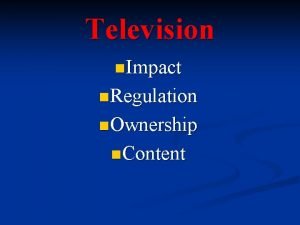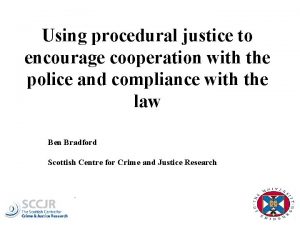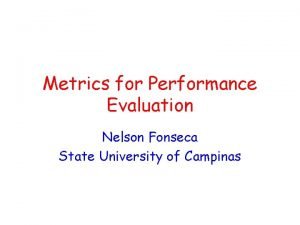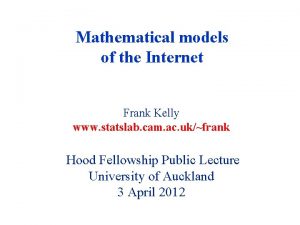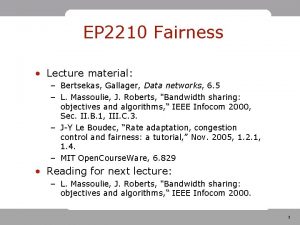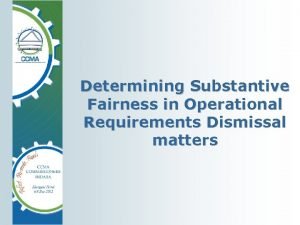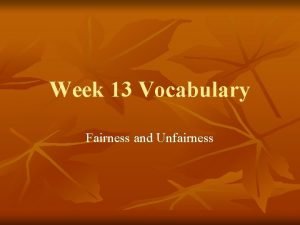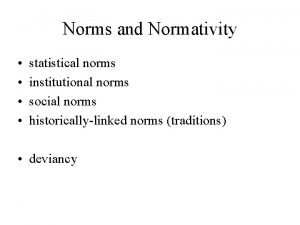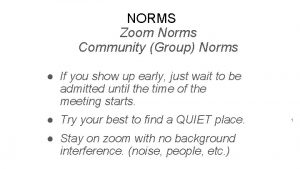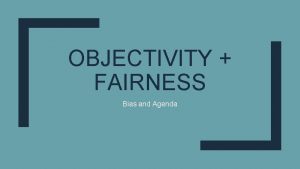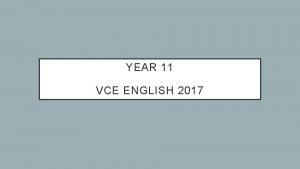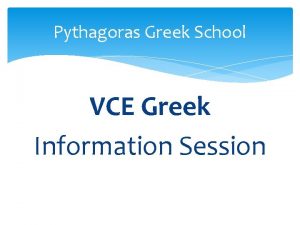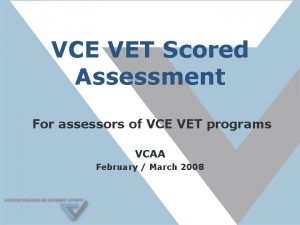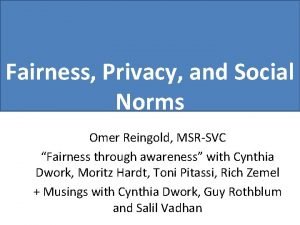Fairness Norms and Selfinterest in VCE Contracting A


















- Slides: 18

Fairness Norms and Self-interest in VC/E Contracting: A Behavioral Game-theoretic Approach • Existing VC/E Financial Contracting Models assume narrow self-interest. • Double-sided Agency problems (both E and VC exert Value-adding Effort) (Casamatta JF 2003, Repullo and Suarez 2004, Fairchild JFR 2004). • Procedural Justice Theory: Fairness and Trust important. • No existing behavioral Game theoretic models of VC/E contracting. 1

My Model: • VC/E Financial Contracting, combining double-sided Moral Hazard (VC and E shirking incentives) and fairness norms. • 2 stages: VC and E negotiate financial contract. • Then both exert value-adding efforts. 2

How to model fairness? Fairness Norms. • Fair VCs and Es in society. • self-interested VCs and Es in society. • Matching process: one E emerges with a business plan. Approaches one VC at random for finance. • Players cannot observe each other’s type. 3

Timeline • Date 0: VC makes ultimatum offer of equity stake to E; • Date 1: VC and E exert value-adding effort in running the business • Date 2 Success Probability • => income R. • Failure probability • =>income zero 4

• Expected Value of Project • Represents VCs relative ability (to E). 5

Fairness Norms • Fair VC makes fair (payoff equalising) equity offer • Self-interested VC makes self-interested ultimatum offer • E observes equity offer. Fair E compares equity offer to social norm. Self-interested E does not, then exerts effort. 6

Expected Payoffs • If VC is fair, by definition, 7

Solve by backward induction: • • • If VC is fair; Since for both E types. => => 8

VC is fair; continued. • Given Optimal Effort Levels: Fair VC’s equity proposal (equity norm): 9

VC is self-interested: • From Equation (1), fair E’s optimal effort; • 10

Self-interested VC’s optimal Equity proposal • Substitute players’ optimal efforts into V= PR, and then into (1) and (2). Then, optimal equity proposal maximises VC’s indirect payoff => 11

Examples; • VC has no value-adding ability (dumb money) => • • r =0 => • r => 1 , 12

Example 2 • VC has equal ability to E; => • r =0 => • r => 1 , • We show that as r => 1 13

Table 1. 14

Graph 15

Table of venture performance 16

Graph of Venture Performance. 17

Future Research. • Dynamic Fairness Game: ex post opportunism (Utset 2002). • Complementary Efforts. • Trust Games. • Experiments. • Control Rights. 18
 Global context ib
Global context ib Fairness and diversity in the workplace
Fairness and diversity in the workplace Veil of ignorance meaning
Veil of ignorance meaning Fairness and flawless ceo
Fairness and flawless ceo Justice as fairness
Justice as fairness On formalizing fairness in prediction with machine learning
On formalizing fairness in prediction with machine learning Dominant resource fairness
Dominant resource fairness Line-drawing fallacy
Line-drawing fallacy Max-min fairness example
Max-min fairness example Fairness scenarios
Fairness scenarios The fairness doctrine
The fairness doctrine The fairness doctrine
The fairness doctrine What is procedural justice
What is procedural justice Fairness
Fairness Fairness
Fairness Keva cream
Keva cream Max-min fairness
Max-min fairness Substantive fairness
Substantive fairness Fairness adjective
Fairness adjective

